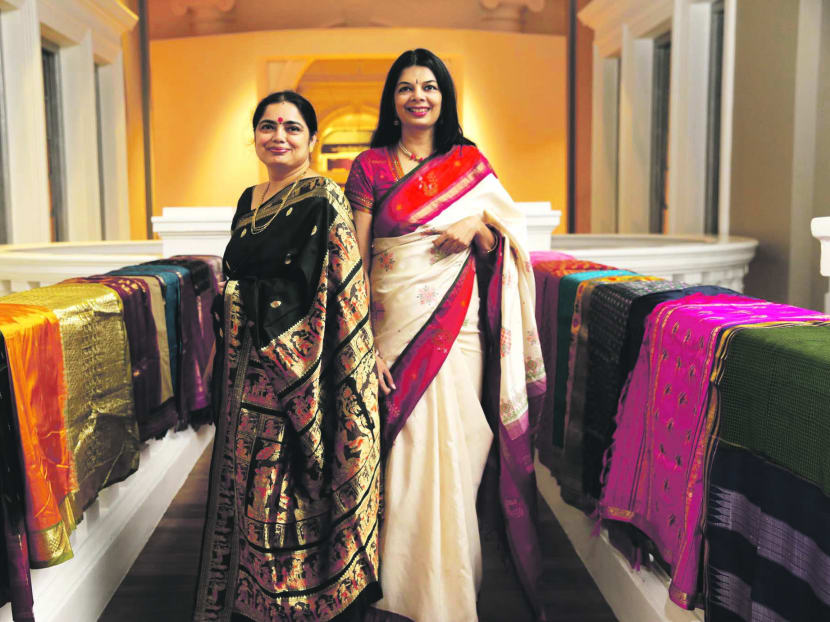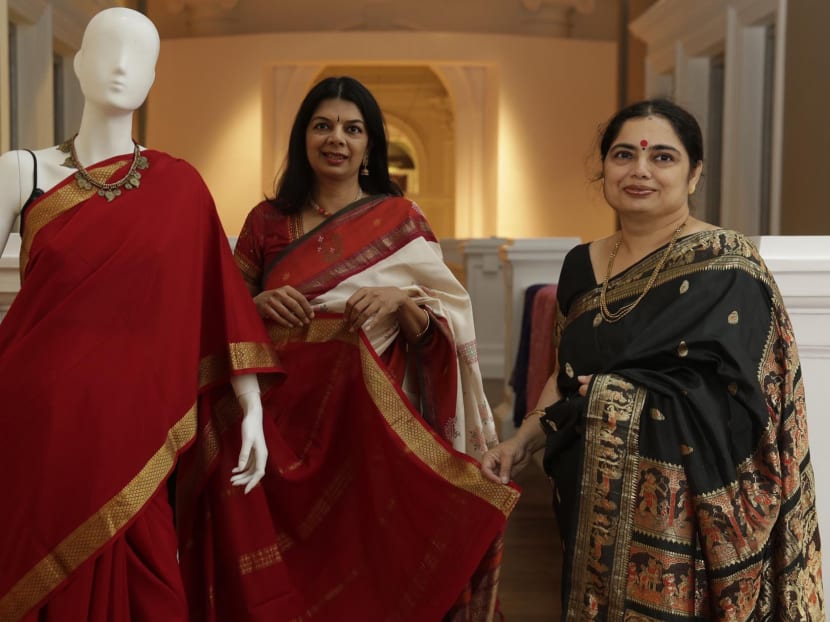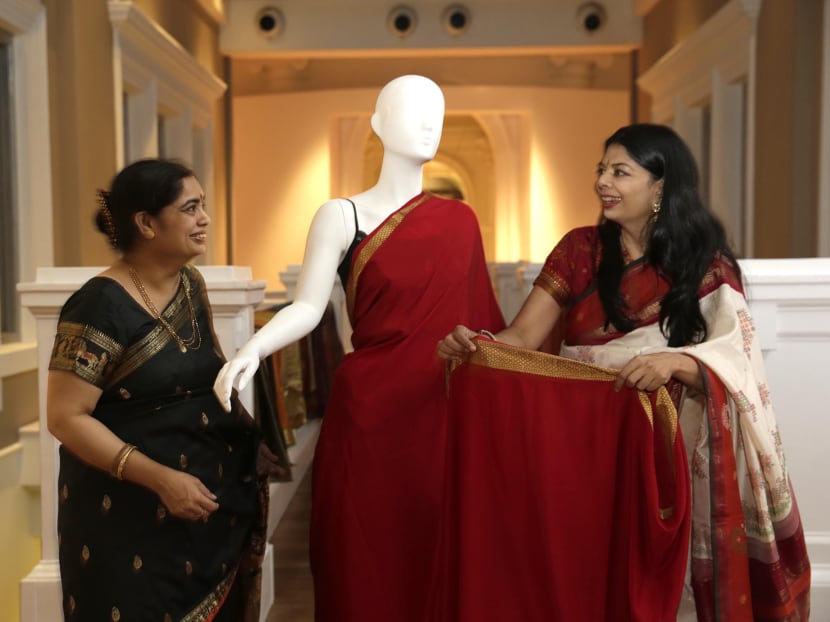The story of the sari
It is elegant, feminine and can be both traditional and modern. Many have been passed down from generation to generation, and it is still very much worn today in Singapore. We are referring to the sari, of course, a timeless Indian garment that has survived for centuries.



SINGAPORE — It is elegant, feminine and can be both traditional and modern. Many have been passed down from generation to generation, and it is still very much worn today in Singapore. We are referring to the sari, of course, a timeless Indian garment that has survived for centuries.
“The sari is one of the oldest surviving traditional costumes, worn even today by women in the South Asian subcontinent,” said Nalina Gopal, curator at the Indian Heritage Centre.
“The multifarious weaves and textures and the colourful dyes have tremendous appeal. The sari also lends itself to changing trends in the fashion world, and this has helped renew its relevance. Lastly, the sari is integral to life-cycle rites and rituals, and has a cultural significance.”
And, with large numbers of Indians moving to Singapore over the past few centuries, the sari has become intertwined with our nation’s history.
“The sari is but one example of a drape, a costume that travelled with the diaspora across the world, much like it did in Singapore,” Nalina explained. “Historically, too, Indian traders have influenced fashion in the region, arriving with trade cloths since the pre-colonial period. This continued in 20th-century Singapore, with textile traders such as P Govindasamy Pillai and others playing a role in the shaping of fashion among the diaspora. Today, textile shops on Arab Street and Little India continue to play this role,” she said.
Pointing out that this form of dress is “one of the most visible and definitive markers of identity among the Indian diaspora”, she added: “Drapes such as the sari, the veshti or dhoti travelled with migrants, and remain an essential aspect of everyday fashion, pointing to the preservation of tradition and culture. Early photographs of Indian women in Singapore, especially of Tamil origin, (that) date back to the late 19th or early 20th century show them wearing the sari.”
AVID SARI COLLECTORS
To celebrate Deepavali this week, the National Museum of Singapore’s public history programme, A Lighter Side of History, will be on The Timeless Appeal of the Indian Sari. This programme celebrates Singapore’s diverse multicultural heritage, from food and dress to the different languages and customs passed down over the years.
At this talk, Sarita Alurkar-Sriram and Sudha Kanago will reveal more about the history of the sari, its ties with Singapore’s history, as well as how draping styles in Singapore have evolved. Attendees can also try draping a sari on themselves or a friend.
The two women are avid sari collectors and have done endless personal research on the topic for years; they run a popular page on Facebook called The Timeless Appeal Of The Indian Sari. And they each have more than 200 saris in their personal collection.
“The sari is a living heritage and it is very much a part of Singapore’s cultural legacy,” said Alurkar-Sriram, 49, a marketing professional who has been a permanent resident (PR) for 16 years. “Future generations of Singaporeans are inheriting such a rich textile heritage with the Chinese cheongsam, the Malay baju-kebaya and the Indian sari, among others, and they need to know the vastness and richness of this unique heritage.
“Though the sari remains a piece of unstitched cloth — that has remained unchanged over centuries — it has evolved in terms of the types of fabric and draping style. In fact, the ways you can drape the six yards of fabric that constitute the sari are limitless — or are limited only by your own creativity.”
A FUN GARMENT
Alurkar-Sriram was eager to start her own sari collection after borrowing her mother’s saris through her growing-up years. She got the opportunity when she was sent on an 18-month deputation to Mumbai in the early 1990s. She travelled to almost 30 cities in India and explored the vast range of weaves that the country offered first-hand, and slowly and steadily built her collection.
As for Kanago, who works in the healthcare industry, she was gifted her first sari during her final year at college and started buying them when she started working in 1992. When she travelled to India for work, she bought saris from every city she went to. She also got saris as gifts for family weddings or happy family events such as the births of nieces, house warmings, or anniversaries and festivals.
“Saris last long and they haven’t gone out of fashion,” said the 47-year-old, whose husband is a PR. “And they work whether I put on or lose weight, so they never get retired from my wardrobe, except when I give them away. Some get recycled into curtains, skirts and quilts for my nieces.”
With the garment being a part of our history, Kanago would like Singaporeans to know more about it.
“It’s comfortable to wear and manage, and rural women in India wear them for hard physical labour. My mother lives and breathes in her sari 24 hours a day, 365 days a year. My grandmother’s generation even swam in a nine-yard sari! Even today, half a billion women in Asia wear saris for daily wear. During disaster relief in South Asia, saris are always in short supply and sari donations are most appreciated.”
“The sari is a fun garment,” she continued. “Being unstitched fabric, its versatility allows the wearer so much room for experimentation in drape, style and look. It’s great for those who like to create their own look. It’s also a garment that suits every shape and size.”
A Lighter Side of History: The Timeless Appeal of the Indian Sari takes place at The Salon on Level 1 of the National Museum on Oct 29 from 2.30pm to 4pm. Admission is free.





